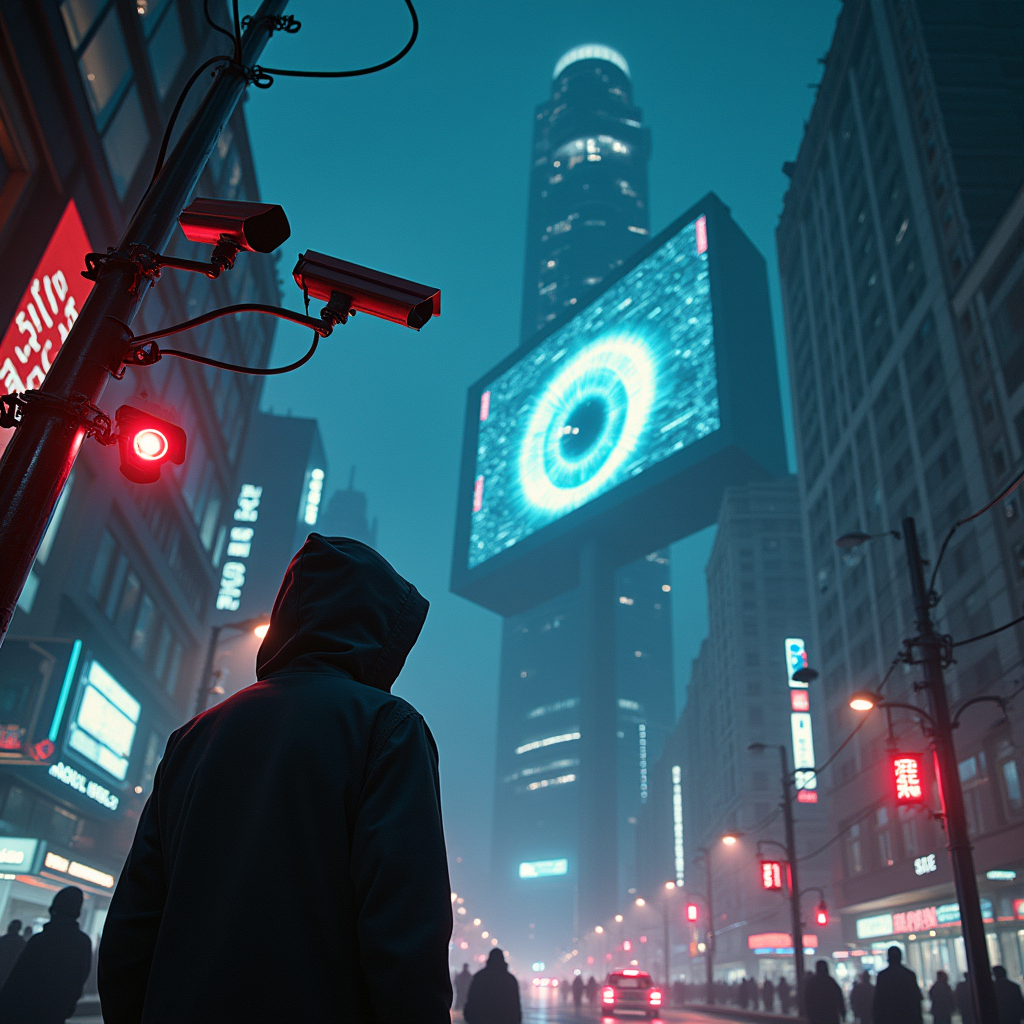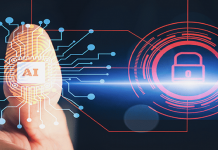This article has been written by Sanskruti Santosh More pursuing a Diploma in Technology Law, Fintech Regulations and Technology Contracts from LawSikho.
This article has been edited and published by Shashwat Kaushik.
Table of Contents
Introduction
In today’s modern era, privacy is crucial because it allows people to choose which personal information to disclose and to whom. Social media and other digital footprints have a major impact on privacy. Mass surveillance, often known as complete surveillance, is the continuous observation of individuals without their awareness. China and other highly developed countries use facial recognition and artificial intelligence. Article 21 of the Indian Constitution protects privacy, and electronic communication surveillance is subject to surveillance legislation. Government programs such as the National Intelligence Grid and the Centralised Monitoring System expand surveillance capabilities. Big data raises privacy concerns, but it is critical for surveillance and predictive crime technologies.
Privacy: its meaning and example
Privacy is the right to choice—to be left alone. There are some things in your life that you don’t want to share with anyone. For example, consider some important discussions you have with your partner, what you share with your doctor, or any important case related to you with a lawyer. You do not want these things to be known by anyone, so the freedom of what people let them know about them or not is called privacy. Privacy can be seen everywhere because we are known by our digital footprint. A digital footprint means any information or data related to you. In case I need to find you, I can just go to any social media site or LinkedIn and easily find you; that’s your digital footprint.
What is total surveillance
Mass surveillance or total surveillance can be said as interchangeable words, which means constant observation or watch is kept on the person without even knowing that they are being watched by someone. In the 18th century, philosopher Jeremy Bentham made a prison called Panopticon, which was made in such a way that it kept a constant surveillance of prisoners. This kind of surveillance was done way back in ancient times, but nowadays it is done in modern ways and means. China stands out as being the best in digital panopticon because they have made the ultimate and best use of technologies like artificial intelligence (AI), face recognition, biometrics, and big data analytics. This has taken the use of technology to the next level, due to which China can have access to all individuals in the country.
Laws & development in India related to surveillance
What is the right to privacy
The right to privacy is discussed above in the introduction, which says that the “right to be let alone” is well discussed in the case of Justice K.S. Puttuswamy vs. Union of India (2017). The right to privacy is a fundamental and inalienable right that is attached to a person, covering all information and choices made by that person. It also protects the right to life and personal liberty under Article 21.
News related to surveillance
The Pegasus Project It was seen that approximately 300, or more than 300, Indians were spied on with the help of Spyware Pegasus, but the government is saying that if the government has legitimised the opposition, it was the opposition that was involved in this surveillance process, but the government had said that if they had done that, they would have done it through legitimate laws. Pegasus Project is a spyware company by the name of Pegasus, which is an Israeli-based company developed in 2016. It is zero-click spyware, if it is supposed to be. For example, if you have an unknown WhatsApp call number, even if you do not pick up the call, the spyware Pegasus will be able to download it to your system, and it will spy on you with the help of the microphones and camera. With the help of this spyware, many companies have been employing it to keep a tap on the information of many individuals, and from India, it is approximately . 300 people.
Important laws that cover surveillance
The surveillance laws in India are covered under two, out of which the first is the Telegraph Act, 1885, so basically it deals with surveillance when it comes to the interception of calls, which comes under Section 5(2). It says that there are certain restrictions that the government can intercept calls only in certain situations when it comes to the sovereignty and integrity of India, friendly relations with foreign powers, public order, and prohibition of incitement of violence. If these criteria are checked, then only the government can go with tapping the phones, but lawful interception cannot take place against journalists. The case Public Union for Civil Liberties v. Union of India (1996) pointed out the lack of procedural safeguards in the Act, but tapping is a very serious issue; it is an invasion of an individual’s privacy, so this gave rise to introducing Rule 419A in the Telegraph Rules in 2007 and later in the rules prescribed under the IT Act in 2009. The Information Technology Act 2000 is the second type of law under which surveillance can take place. It guides all electronic communication. Section 69 of the IT Act and the IT (Procedural for Safeguards for Interception, Monitoring, and Decryption of Information) Rules, 2009, enacted the further legal framework for electronic surveillance. It covers all digital content, so it has broad coverage, so if they have to undertake Pegasus as spyware, they should follow the two laws given above.

Centre surveillance projects
The Indian government has implemented various surveillance projects, raising concerns among privacy advocates and citizens alike. One such project is the Centralised Monitoring System (CMS), a specialised department under which lawful surveillance can be conducted with the government’s approval. The CMS allows authorities to monitor and collect data from various communication channels, including phone calls, emails, and social media.
Another controversial surveillance project is Network Traffic Analysis (NETRA), which focuses on identifying suspicious keywords and patterns in online communications. NETRA employs sophisticated algorithms to analyse vast amounts of data, looking for indicators of potential threats or illegal activities. While NETRA aims to enhance security, critics argue that it could lead to the misinterpretation of innocent messages and the violation of individual privacy.
Additionally, the establishment of the National Intelligence Grid (NATGRID) in 2009 further expanded the government’s surveillance capabilities. NATGRID serves as a central database where various intelligence agencies can access information related to immigration, border crossings, suspicious banking transactions, and telecommunication records. The purpose of NATGRID is to facilitate real-time information sharing and improve coordination among intelligence agencies, but concerns have been raised regarding the potential for misuse and abuse of such sensitive data.
These surveillance projects have generated significant debate in India, with critics arguing that they infringe upon fundamental rights to privacy and free expression. Activists and civil society organisations have called for greater transparency, accountability, and safeguards to prevent the misuse of surveillance powers. The Indian government has defended these projects as necessary for national security and has emphasised that strict protocols are in place to ensure the responsible use of surveillance technologies.
The ongoing discussions surrounding India’s surveillance projects underscore the delicate balance between safeguarding national security and protecting individual privacy. As technology continues to advance, it remains crucial for policymakers, experts, and citizens to engage in informed discussions and find ways to strike a balance between security and privacy in the digital age.
Initiatives undertaken by the government
The initiative taken in 2012 was taken by the planning commission and the group of experts on privacy issues under Justice AP Shah to identify the gaps that were affecting the right to privacy. It stated that the type of interception and the granularity of information that can be intercepted are all very open to interpretation; there is not a clear definition of it, and the degree of assistance service provider and the “destruction and retention” of intercepted material are also reported by the Center for the Internet, and society has an issue. It also took the initiative to draft the Digital Personal Data Protection Act, 2023. Also, a B.N. Srikrishna Committee was formed in 2018 for the Data Privacy Rules, and certain safeguard rules were brought in the Information Technology Act, 2000, so these are some of the initiatives taken by the Government of India.
What is big data
Big Data, in simple words, means a huge and wide variety of data is collected in various forms that grows over time. I have always wondered how much data is generated from our smartphones in various forms, like messages, phone calls, emails, videos, and photos. It generates a huge amount of data every month. For example: If 40 exabytes of data are generated by you every month, imagine that if this number is a multiple of 5 billion smartphone users, then it’s a huge amount of data generated. This is quite large for traditional computing systems to handle, and this massive amount of data is what we term “big data.
If you have a look at how much data is generated per minute on the internet by various apps, these are some of the app details provided below:
- Google searches 5.9 million per minute.
- Snap shared on Snapchat generates 2.43 million per minute.
- Email sent generates 231.4 million per minute.
- Pieces of content shared on Facebook: 1.7 million per minute.
- Hours spent in Zoom meetings: 104,600 per minute.
- India ranks 14 countries with a number of data centres of 152.
How do I classify any data as big data?
It is possible with the concepts of volume, velocity, variety, veracity, and value. This is the 5 Vs. you will understand with an example from the healthcare industry. Hospitals and clinics across the world generate massive volumes of data. 3000 exabytes of data are collected annually in the form of patient records and test results. All this data is generated at very high speed, which attributes to the velocity of big data. Variety refers to the various data types, such as structured, semi-structured, and unstructured data. Examples include Excel records, log files, and x-ray images. The accuracy and trustworthiness of the generated data are termed veracity. Analysing all this data will benefit the medical sector by enabling faster disease detection, better treatment, and reduced costs. This is known as the value of big data.

Case related to big data in Indian content:
- The 2014 general election was conducted by the BJP, which tested out big data analysis.
- The Government of India brought up the idea of policy enforcement, and various methods were also found for how Indian voters react to this activity done by the government.
What is predictive crime technology
For many decades, law enforcement agencies have used technology to help investigate and solve crimes. Forensic science has experienced significant advancements, DNA testing has revolutionised the way we identify criminals, and facial recognition software has made it easier to track down suspects. However, a new type of software is now available that can take crime-solving to the next level: predictive crime technology.
Predictive crime technology uses data analytics and algorithms to identify individuals who are at high risk of committing crimes. This information can then be used by law enforcement agencies to prevent crimes from occurring in the first place. For example, predictive crime technology could be used to identify potential gang members or individuals who are likely to commit domestic violence. This information could then be used to provide these individuals with support services or to increase police patrols in areas where they are likely to be.
Several different techniques are used to predict crime. One approach is to use historical crime data to identify patterns and trends. For example, if a certain type of crime is known to occur frequently in a particular area, predictive crime technology could be used to identify individuals who live in that area and who have a history of similar crimes. Another approach is to use data from social media and other online sources to identify individuals who are expressing violent or hateful thoughts. Finally, predictive crime technology can also be used to identify individuals who are at risk of becoming victims of crime. For example, predictive crime technology could be used to identify elderly individuals who live alone and who are at risk of being burgled.
Predictive crime technology is a powerful tool that can be used to help law enforcement agencies prevent crimes from occurring. However, it is important to use this technology responsibly and ethically. Predictive crime technology should not be used to target or discriminate against any particular group of people. Instead, it should be used to identify individuals who are at high risk of committing crimes and to provide them with support services or other interventions.
The Jharkhand Case, for instance, highlights how predictive crime technology can be used to prevent crime and improve public safety. In this case, predictive crime technology was used to identify individuals who were at risk of committing domestic violence. This information was then used to provide these individuals with support services and to increase police patrols in areas where they were likely to be. As a result, the number of domestic violence incidents in the area decreased significantly.
The use of predictive crime technology is a growing trend, and it is likely that this technology will play an increasingly important role in law enforcement in the years to come. As predictive crime technology continues to develop, it is important to ensure that it is used responsibly and ethically to protect public safety and preserve individual rights.
Conclusion
The article delves into the concept of total surveillance, including relevant laws, government projects, and the impact on personal privacy. It investigates the development and application of big data in modern surveillance as well as the significance of predictive crime technology in anticipating future crimes. The paper emphasises the necessity of balancing technology and privacy, as well as the importance of recognising the role of big data in modern surveillance tactics.
References
- https://privacyinternational.org/learn/mass-surveillance#:~:text=Mass%20surveillance%20can%20subject%20a,express%20yourself%20and%20to%20protest.
- https://cis-india.org/internet-governance/blog/predictive-policing-what-is-it-how-it-works-and-it-legal-implications
- https://iapp.org/about/what-is-privacy/
- https://niti.gov.in/sites/default/files/2020-01/Vision_Document_30_Jan.pdf
- https://www.legalserviceindia.com/legal/article-10439-surveillance-and-privacy-in-india.html
- https://www.cnbc.com/2014/04/10/how-big-data-have-changed-india-elections.html
 Serato DJ Crack 2025Serato DJ PRO Crack
Serato DJ Crack 2025Serato DJ PRO Crack










 Allow notifications
Allow notifications


